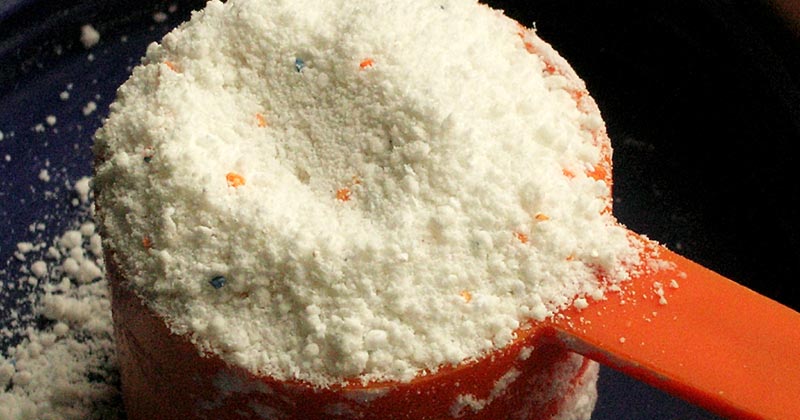After the coronavirus spread, people are obsessively cleaning things using detergent and disinfectants. Disinfectants do have a virucidal effect and are currently in great demand. However, there are other ways to remove the coronavirus from surfaces. Let’s find out whether detergents can kill coronavirus on packages and surfaces and what are the alternatives.
Not only in public but also their houses, people want to reduce the risk of infection from the coronavirus and disinfect all surfaces to do this. Suitable agents for surface cleaning are difficult to find in supermarkets or drug stores during the Corona crisis. But there are other substances that remove the coronavirus and many of them are even included in some cleaning products.
Coronavirus detergent?
The coronavirus is an enveloped virus. It consists of protein and genetic information, which are covered by a layer of fat (lipids). If this shell is destroyed, the virus cannot survive either. Cleaners containing surfactants contain substances that have exactly this effect on the coronavirus. This is one reason why hand soap and intensive handwashing reduce the risk of infection with Covid-19. Liquid soap in particular has a high degree of fat-dissolving properties. Therefore, the cleaning agent is particularly suitable against coronaviruses.
Alcohol cleaner destroys the virus envelope

As with detergents containing surfactants, alcohol (ethanol, isopropyl alcohol) destroys the fatty virus envelope. But it is important that the alcohol content in the cleaning agent must be at least 60 to 70 percent. However, you cannot disinfect every object with an alcohol cleaner. Some materials do not tolerate the agent as they break or change their surface structure. Therefore, test in advance on a small area whether you can clean the object with the alcohol-based agent.
Bleach against viruses
Whether the toilet in the bathroom or the worktop in the kitchen, with hydrogen peroxide, the surfaces become free of bacteria and viruses. The liquid is a combination of oxygen and hydrogen. However, hydrogen peroxide is not only used as a disinfectant against viruses, bacteria, and salmonella. The active ingredient is also found as a bleaching agent for hair or teeth or in agents for removing mold. Highly concentrated, however, it can be harmful to health. Diarrhea, vomiting, chemical burns to the skin, and circulatory problems are just some of the symptoms. When using the agent, you should, therefore, avoid skin contact and always use it diluted.
A 0.5 percent solution is enough to significantly reduce the risk of infection with coronaviruses. A 3 percent solution is often used for household use.
Wound healing agents from dentistry
Sodium hypochlorite has a bleaching and disinfecting effect. It is also used to remove mold. But even after a root canal treatment, patients can use a sodium hypochlorite solution as it can promote wound healing. But according to the study, the pharmaceutically active ingredient from dentistry also helps against coronaviruses. A 0.1 percent solution for surface disinfection is sufficient here.

Three active ingredients, in particular, have been shown to help against the coronavirus: ethanol, sodium hypochlorite, and hydrogen peroxide. These agents work against enveloped viruses, which also include SARS-CoV-2. Even agents that have limited virucidal properties could partially remove the coronavirus from surfaces, even if this is not expressly stated by the manufacturers. The exposure time of at least one minute is important.
How is laundry virus-free?
If you have an infected person in your household or if you were infected with the coronavirus yourself, you should thoroughly clean the apartment, laundry, and clothes regularly. You shouldn’t use antibacterial cleaners and cleaning cloths from the supermarket or drugstore when cleaning. These agents often only have an antibacterial and no virucidal effect.
It makes more sense to machine wash laundry and other textiles at least 60 degrees. A hygiene rinse in the antibacterial cleaners is not necessary. A heavy-duty detergent containing a bleach is sufficient.

If only one person in the household is sick, you should store and wash your laundry separately. Shake out dirty laundry before washing, ideally in the fresh air so that the viruses cannot spread further in the room.
Regular ventilation
In addition to extensive cleaning of all surfaces and textiles, there is another measure against the coronavirus. Proper ventilation can reduce the risk of infection. Regardless of whether there is a sick person in your household or not, you should ventilate rooms regularly. The intensive air exchange during shock ventilation changes the composition of the room air and can reduce the time the active viruses remain in the air which means more oxygen and better air circulation. The latter is particularly useful for the mucous membranes that have partially dried out from the heating air.


